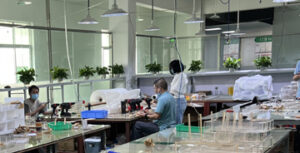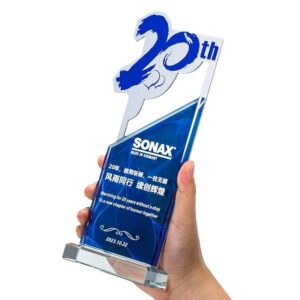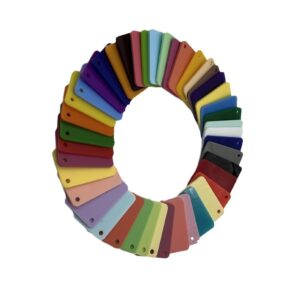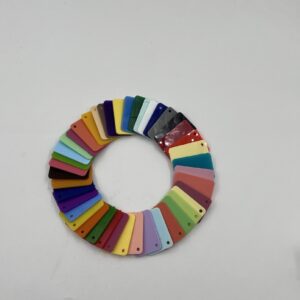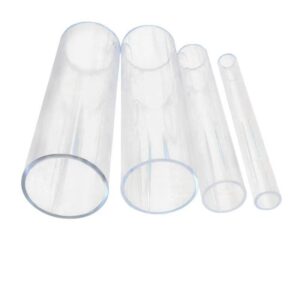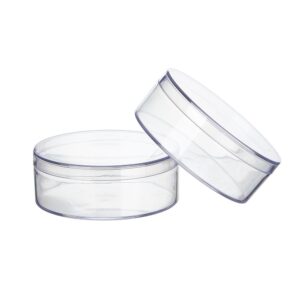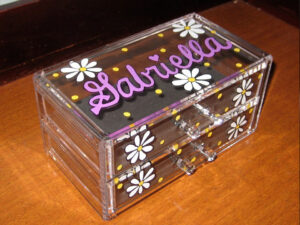Summary
Modern Menu Display Ideas Using Acrylic refer to innovative and visually appealing methods of presenting menus in the hospitality industry, primarily using acrylic materials. These displays have gained popularity due to their versatility, durability, and contemporary aesthetic, making them an essential marketing tool for restaurants, cafes, and bars. The shift towards acrylic displays reflects a broader trend of integrating design with functionality, enhancing customer engagement and overall dining experiences.
Acrylic menu displays come in various forms, including wall-mounted, tabletop, floating, double-sided holders, and custom covers, each serving distinct purposes. Wall-mounted displays maximize space in areas where tabletops are limited, while tabletop options enhance visibility directly on dining surfaces. Floating menu holders cater to upscale environments, presenting a sleek look without clutter. Additionally, integrating digital elements, such as QR codes, allows for a seamless connection between traditional menu displays and modern technology, further enriching the customer experience.
The use of acrylic also introduces several design considerations, such as material choice, color psychology, typography, and layout. These factors significantly influence how effectively menus attract attention and communicate offerings to diners. The ability to customize acrylic displays allows businesses to align their branding with their menu presentation, creating a cohesive dining atmosphere that reflects their unique identity. However, there are challenges associated with acrylic displays, including maintenance, cost management, and ensuring sustainability in material sourcing, which businesses must navigate to achieve optimal results.
As the hospitality industry continues to evolve, acrylic menu displays stand out not only for their aesthetic appeal but also for their adaptability to changing consumer preferences and trends. Their incorporation into modern dining environments showcases a commitment to enhancing customer satisfaction while addressing the practical needs of restaurant operations.
Table of Contents
Types of Acrylic Menu Displays
Acrylic menu displays are popular in the hospitality industry due to their versatility, modern aesthetic, and ease of use. These displays can take various forms, each catering to different needs within restaurants, cafes, and bars.
Wall-Mounted Displays
Wall-mounted acrylic displays offer a sophisticated solution for showcasing menus or promotional materials in a way that maximizes space and visibility. They are ideal for areas where tabletop space is limited, allowing restaurants to present their offerings attractively without cluttering surfaces. These displays can be designed with seasonal themes or vibrant graphics to keep content fresh and engaging for customers.
Tabletop Displays
Tabletop displays are designed to hold menus, specials, or promotional materials directly on dining tables. Common sizes include A5 and $8.5 \times 11$ inches, allowing for a complete menu or a concise list of specials to be showcased prominently. These holders not only enhance visibility but also engage customers while they wait for their orders, encouraging additional purchases.
Floating Menu Holders
Floating menu holders create a sleek and modern look, offering a clean way to present menus while maintaining an uncluttered appearance. These displays are often used in upscale dining environments where aesthetics are a priority, as the transparent nature of acrylic allows for creative presentations without distractions.
Double-Sided Holders
Double-sided acrylic holders are particularly effective in high-traffic areas where information needs to be visible from multiple angles. These displays are beneficial for showcasing more content in limited space, making them a practical choice for busy restaurants or bars.
Custom Menu Covers
Custom acrylic menu covers can be tailored to suit specific branding or decor needs. Available in various colors and finishes, these holders not only protect menus but also enhance the overall dining experience by aligning with the restaurant’s theme or style.
Digital Integration
Incorporating digital elements, such as QR codes into acrylic displays, allows customers to access online menus or loyalty programs easily. This modern approach not only provides convenience but also integrates digital marketing strategies into traditional display methods, making it a forward-thinking option for contemporary establishments. Acrylic menu displays serve as a vital marketing tool for restaurants, cafes, and bars, combining practicality with an appealing design to enhance customer engagement and improve the overall dining experience.

Design Considerations
When designing menu displays using acrylic, several key factors must be taken into account to ensure that the final product is both visually appealing and functional. These factors include material choice, color psychology, typography, and layout, each contributing to the overall effectiveness of the display in attracting customer attention and enhancing their dining experience.
Material and Customization
The choice of acrylic material plays a crucial role in the overall aesthetic and durability of menu displays. The thickness and grade of the acrylic can significantly affect the final cost and structural integrity of the displays, with thicker sheets providing greater strength for larger installations. Additionally, the ability to customize the shapes, sizes, and finishes of acrylic displays allows businesses to create unique solutions that align with their brand identity. Colored acrylic is particularly popular, offering a wide range of hues that can reinforce corporate branding and create visually striking displays.
Color Psychology
Understanding color psychology is vital in menu design, as colors can evoke specific emotional responses and influence consumer behavior. For instance, colors like red and yellow are known to stimulate appetite, making them effective choices for restaurant environments. In contrast, blue may have a less appealing effect on food perception. By strategically using colors that align with the restaurant’s theme and brand identity, businesses can create a cohesive visual experience that enhances the menu’s effectiveness.
Typography and Layout
Typography is another essential element in menu design. The font choice should reflect the personality of the restaurant, with more formal establishments opting for elegant serif fonts, while casual dining may prefer relaxed sans-serif options. The use of different font sizes and styles can establish a hierarchy, making it easier for customers to navigate the menu and identify high-profit items. Additionally, incorporating clear and descriptive language is critical; sensory words can enhance the appeal of dishes and encourage customer selection.
Menu layout should also be thoughtfully designed to guide customers through the offerings logically. Research indicates that reading patterns, such as the F-pattern and Z-pattern, influence how customers interact with menus. Strategically placing high-profit items in these “hot spots” increases their visibility and potential sales.
Collaboration and Long-Term Value
Creating effective acrylic menu displays is a collaborative process that benefits from clear communication between designers and restaurateurs. By working closely during the design and prototyping phases, businesses can ensure that the final products meet their expectations without unexpected surprises during production. A well-managed fabrication process not only enhances the visual impact of displays but also optimizes budget considerations, allowing for a strategic focus on features that add the most value.

Benefits of Using Acrylic for Menu Displays
Acrylic displays have become increasingly popular in the dining and hospitality industries due to their numerous benefits. These advantages contribute significantly to enhancing the dining experience for customers while providing practical solutions for restaurant owners.
Aesthetic Appeal
One of the standout features of acrylic displays is their sleek and modern appearance. Available in various shapes and sizes, clear acrylic displays allow light to pass through, creating a sense of openness and cleanliness that can enhance the overall ambiance of a restaurant. The transparent nature of acrylic ensures that menus and promotional materials are displayed with maximum clarity, making them more appealing and engaging for diners. This visual attractiveness not only highlights the food being served but also complements the restaurant’s branding and theme.
Durability and Maintenance
Acrylic displays are notably durable, being highly resistant to shattering and breakage, which makes them ideal for high-traffic dining environments. Compared to glass, acrylic is lighter and less likely to cause injury if broken, reducing the risk associated with traditional glass displays. Additionally, acrylic is easy to clean and maintain, resisting stains and yellowing over time, which is crucial in food service settings. Regular cleaning with non-abrasive materials helps maintain clarity and ensures that displays remain visually appealing, allowing restaurant staff to focus on service rather than upkeep.
Versatility
The versatility of acrylic displays is another significant advantage. They can be used for various applications, including menu stands, table tents, and signage to communicate important information to customers. Acrylic can also be molded into unique shapes, allowing for creative presentations that attract and engage diners, such as displaying baked goods or special promotions. This adaptability enables restaurants to frequently update their displays to reflect changing menus or themes, keeping the dining environment fresh and interesting.
Enhanced Customer Experience
The use of acrylic menu displays can significantly enhance the customer experience by presenting menu items in an organized and attractive manner. Clear menu holders allow diners to easily view their options without distractions, which can lead to higher sales as customers are more likely to explore additional offerings. The polished and professional appearance of acrylic displays can also contribute to a positive dining atmosphere, promoting customer satisfaction and loyalty.

Applications
Acrylic displays have become a popular choice for a variety of applications, particularly in the realm of menu presentation and customer engagement. Their sleek, modern look enhances the ambiance of retail spaces, restaurants, and other service-oriented establishments, making products and information more visually appealing to customers.
Restaurant Menu Displays
In the restaurant industry, acrylic displays serve as effective menu holders, allowing establishments to showcase their offerings in a clear and attractive manner. These displays can accommodate various formats, including vertical and horizontal layouts, which makes them versatile for different types of menus. Additionally, modern designs often integrate digital elements, such as touch screens embedded in acrylic frames, enabling customers to interact with the menu directly. This not only improves customer engagement but also streamlines the ordering process.
Retail Signage
Beyond menus, acrylic displays are extensively used for retail signage and promotions. Businesses utilize acrylic frames to present advertisements, flyers, and brochures in a stable, self-standing manner, which can be easily relocated as needed. This adaptability allows stores to keep their promotional materials fresh and aligned with current marketing strategies.
Event and Exhibition Use
Acrylic displays are also favored in event and exhibition settings. They can be employed to present information about products or services at trade shows, weddings, and other gatherings. Their clear design helps to maintain a professional aesthetic while effectively communicating important details to attendees. The ability to incorporate QR codes into acrylic displays enhances interactivity, allowing customers to scan for additional information or special offers, thus enriching the overall experience.
Home and Office Applications
In addition to commercial uses, acrylic displays are suitable for home and office environments. They can be used to display family photos, artwork, or important documents in a stylish manner. Their minimalist design fits well with various decor styles, making them a popular choice for personal spaces as well.

Innovative Ideas and Trends
Sustainable Materials in Menu Displays
As sustainability becomes a key concern for consumers, incorporating eco-friendly materials into menu displays is increasingly popular. Brands are now opting for displays made from sustainable sources such as reclaimed wood and recycled plastics, which not only enhance the aesthetic appeal but also align with consumers’ environmental values. For instance, the use of sustainable wooden displays can create a warm and inviting atmosphere while reducing environmental impact, making them an attractive option for modern cafes and restaurants.
Creative Design Concepts
Innovative design concepts are transforming traditional menu displays. Techniques such as floating typography on layered acrylic create a minimalist yet eye-catching look, ideal for rustic or contemporary cafe interiors. Moreover, the use of retro typography is gaining traction, as it evokes nostalgia and can enhance brand storytelling. Restaurants are playing with exaggerated serifs and blocky sans-serifs, reminiscent of diner menus and vintage signage, to captivate customers’ attention.
Whimsical Illustrations
The trend of whimsical food illustrations is making waves in menu design, with playful graphics giving menus a unique personality. These designs often feature anthropomorphic food characters, which not only entertain but also create a memorable dining experience. However, as this trend reaches saturation, a shift towards more refined, typography-driven branding is anticipated, focusing on authenticity and craftsmanship.
Versatility of Acrylic Displays
Acrylic displays offer unmatched versatility for showcasing menus and promotions in restaurants. They can be utilized for various applications, from welcoming entrance signage to countertop displays for desserts or drinks. The durability of acrylic, being resistant to shattering and breakage, makes it suitable for high-traffic areas, while its lightweight nature facilitates easy repositioning. This adaptability allows restaurant owners to keep their displays fresh and aligned with changing menus or themes.
Embracing Imperfection in Design
Another emerging trend is the embrace of imperfection in design. The shift away from the ultra-minimalist styles of the past decade towards more hand-illustrated and slightly flawed aesthetics reflects a broader cultural movement towards authenticity in food and drink. Restaurants are increasingly showcasing natural ingredients and handcrafted items, with their branding reflecting this ethos through imperfect, humanized designs. This trend signals a move towards a more relatable and authentic customer experience, enhancing the overall appeal of the dining environment.
Case Studies
Utilization of Recycled Acrylic
A growing number of companies have begun showcasing innovative case studies that highlight how the use of recycled acrylic can help achieve sustainability goals. These case studies demonstrate the tangible difference that implementing recycled materials can make in reducing environmental impact while maintaining product quality and appeal.
Texas Covers: Menu and Signage Solutions
Texas Covers has established itself as a leader in the design and printing of menu covers and table tents for restaurants. With a focus on quality and durability, Texas Covers employs advanced technology and various techniques to create aesthetically pleasing and functional menu displays. Their Lone Star Case Menu Covers are particularly noted for their robustness and stylish design, making them a preferred choice for many dining establishments.
Consumer Behavior and Menu Design
Research into consumer behavior indicates that menu design can significantly impact purchasing decisions. The concept of the “Golden Triangle” illustrates how customers visually navigate menus, typically focusing first on the center, then the top right, and finally the top left. By strategically placing high-margin items in these key areas, restaurants can increase sales. Furthermore, the Serial Position Effect suggests that items at the beginning and end of a list are more likely to be remembered, which can inform menu organization and item placement to enhance profitability.
The Importance of Sustainability in Consumer Choice
Recent surveys have shown a marked shift in consumer preferences towards sustainability. Approximately 80% of respondents in a survey by The Sustainable Restaurant Association indicated that sustainability plays a critical role in their dining choices. This growing demand for eco-friendly practices has led restaurants to adopt more sustainable methods, thereby increasing customer loyalty and foot traffic. Businesses that commit to genuine sustainability efforts—not mere greenwashing—tend to build stronger brand loyalty, improve employee morale, and potentially increase profits through enhanced customer engagement and retention.
Signage Strategies to Enhance Customer Engagement
Effective signage plays a crucial role in driving sales and enhancing customer experience. Benefit-focused, value-focused, and lead generation signage are three types that can significantly impact a restaurant’s profitability. By emphasizing product advantages and connecting emotionally with customers, restaurants can encourage purchasing behaviors. Additionally, signage that promotes loyalty programs can enhance customer retention and keep patrons informed about new menu items.
Challenges in Implementation
Implementing acrylic displays in modern menu presentations comes with its own set of challenges that must be navigated to achieve effective results.
Material Limitations
While acrylic offers several advantages, such as durability and aesthetic appeal, it also has limitations. The material, although strong, can be prone to scratching, which may detract from the visual clarity over time if not properly maintained. Furthermore, in high-traffic environments, the risk of accidental damage increases, necessitating a proactive approach to upkeep and potentially leading to additional costs for replacements or repairs.
Cost Management
Despite the cost-effectiveness of acrylic displays, initial investments can still be significant, especially for small to medium-sized businesses. Retailers must carefully consider their budget when selecting custom displays, balancing quality with affordability. The financial outlay for custom fabrication and installation may pose a challenge, particularly for businesses with limited resources.
Design and Customization
The customization process can also present hurdles. Collaborating with a fabricator requires effective communication and a clear understanding of design objectives. Any misalignment in expectations can lead to delays or unsatisfactory results, potentially impacting the rollout of menu displays. Ensuring that designs are not only visually appealing but also functional and easy to update poses an additional layer of complexity for businesses seeking to adapt quickly to changing trends.
Environmental Considerations
With increasing consumer demand for sustainability, businesses must also navigate the challenge of sourcing eco-friendly materials. This includes the adoption of recycled acrylic or responsibly-produced alternatives, which may not always be readily available or cost-effective. The commitment to environmentally conscious practices can require additional research and development, complicating the implementation process further.
Operational Challenges
Finally, the logistics of implementing acrylic displays across multiple locations can be daunting. Effective project management is essential to ensure that timelines are met and that the installation process is seamless. Retailers need to have a reliable partner who can coordinate manufacturing and distribution to avoid disruptions during setup, which can affect customer experience and sales performance.


